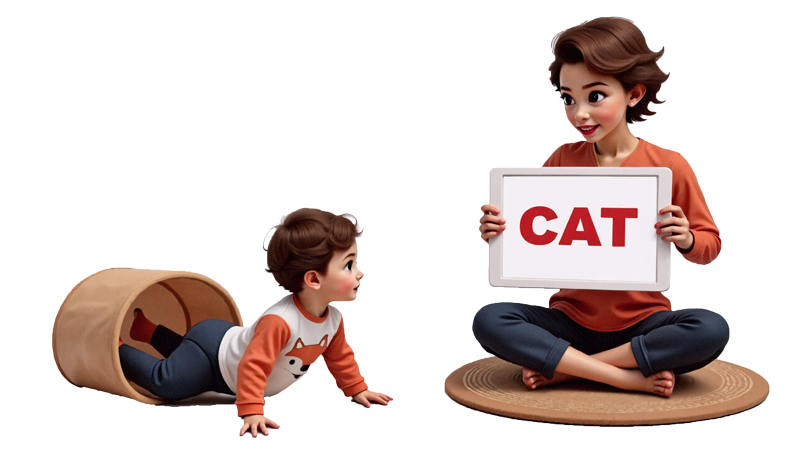
If you’re eager to download LittlePages and start your journey to Teach Your Infant to Read, visit the LittlePages app presentation page. From this page, you’ll be directed to the official Google Play Store listing, where you can easily access the app.
Are you eager to teach your infant to read but unsure where to begin? Imagine if your baby could absorb written language as naturally as they pick up spoken language. With LittlePages and the “Writing Bath” method, that’s exactly what happens. In this post, we’ll explore how LittlePages leverages the right side of your baby’s brain—enabling rapid word recognition and a stress-free reading journey from the very start.
Introduction: Why Reading Can Be as Natural as Speaking
When you talk to your baby, you don’t force them to repeat words or drill vocabulary. They simply listen, observe, and gradually absorb your language. So, why should learning to read be any different? That question is the heart of LittlePages, a system designed to immerse infants in written language in a way that feels as effortless as everyday conversation.

1. How LittlePages Works
Right-Brain Learning
- Whole-Word Recognition: The right hemisphere of the brain processes information quickly and holistically.
- Visual Focus: Words in LittlePages are printed in very large characters to accommodate a young infant’s developing vision and to make letter shapes more distinct.
Key Point: At this stage, infants aren’t associating letters with sounds. They’re recognizing the overall shape of the word and linking it to meaning—just like they recognize your face or a favorite toy.
One Word per Second, Then an Image
- Show each word for one second.
- If there’s an accompanying image, pause for an additional half-second to one second.
- Not all words have images—some represent abstract concepts that you can’t easily illustrate. That’s perfectly normal and part of the process.
Scheduling and Repetition
Three Times a Day
- Present each “sequence” (a set of words) ideally three times daily for optimal memory retention.
- Space It Out: Leave a few minutes between each sequence and a few hours before repeating the same sequence. This spacing helps your child’s brain “forget” just enough for learning to be reinforced when they see the sequence again.
Track Your Progress
- Green Dots: LittlePages tracks your sequences with green dots. Each time you complete a sequence at the right interval, a new green dot appears.
- Red Dots: If the dot turns red, it means you’ve revisited the sequence too soon—your baby hasn’t had enough time to “forget” before relearning.
Remember: Only start as many sequences as you can comfortably manage to do three times that day. Six sequences, three times daily, is just two to four minutes total—a tiny fraction of the day that can have a massive impact on your child’s reading journey.
3. Keeping It Fun and Stress-Free
Maintain a Positive Atmosphere
- Never practice if you’re in a bad mood or feel pressured. Babies pick up on tension and could lose interest in reading.
- Approach each session as an opportunity to connect, not a chore.
4. Why the Writing Bath Method Works
By immersing your baby in a written-language environment, much like we naturally do for spoken language, you’re giving them a head start in literacy. The right-brain approach works because it focuses on recognition rather than phonics at this early stage. Over time, children learn to associate each word’s unique shape with its meaning—no forced repetition or drills required.


I’m working on ZZZs
LittlePages provides a fantastic foundation for recognizing words visually. As your child grows, you can complement this early learning with phonics-based programs like Letterland, which introduces letter sounds through engaging characters and stories.
